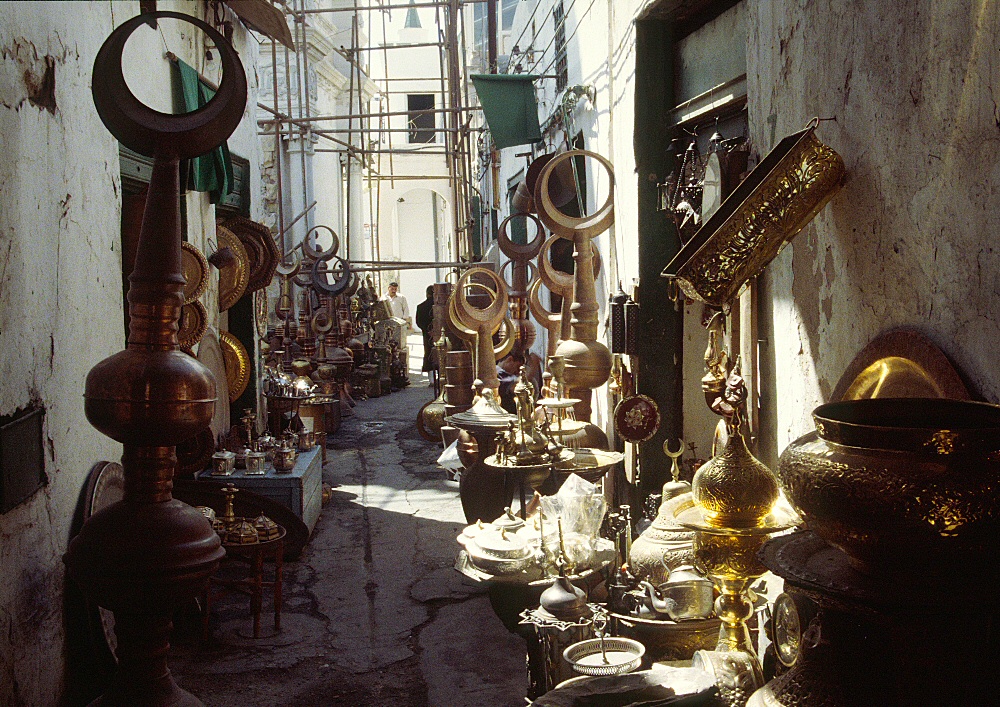
image by Peter van de Haar, Netherlands
In many parts of the Near East, creators and vendors of each type of product cluster together, often along a narrow street, within the market or souq. Here is the metal souq; I have seen scenes similiar to this is Cairo, Beruit and Istanbul, but Peter van de Haar recently captured this view in Tripoli, Libya. Peter comments, I encountered a street where people were making moons! The crescent shape is emblemic of many Islamic societies, occuring on the flags of more than a dozen Muslim nations. The Moon, almost always represented as a cresecent, has been worshipped in the Near East for thousands of years and Muslims today start each new month by visually sighting the 1-3 day old crescent. Everyday LPOD celebrates the Moon as a physcial place, and strives to increase our scientific understanding of it. These wondrous metal moons remind us that our faithful orb has had a powerful emotional effect on humans long before the coming of science.
Yesterday's LPOD: Pits & Plains
Tomorrow's LPOD: Not Santa's Pole




